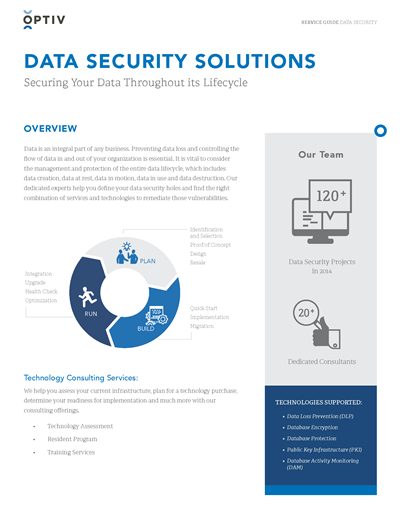The Crucial Nature of Information Devastation in Upholding Computer Security Services and Protecting Versus Unauthorized Access
In an era where data violations and identification burglary are significantly prevalent, the relevance of effective data devastation can not be overstated. Organizations should recognize that the failure to properly throw away delicate info presents not only lawful and economic risks yet additionally a prospective erosion of customer depend on. Different methods, from data cleaning to physical devastation, act as important safeguards versus unauthorized gain access to. However, comprehending the ramifications of data destruction methods and compliance with laws raises crucial inquiries regarding the competence of current methods and their lasting practicality when faced with advancing dangers.
Significance of Information Devastation
In a progressively electronic world, the significance of information devastation can not be overemphasized. As organizations generate huge quantities of sensitive info, the possible repercussions of stopping working to appropriately dispose and take care of of that information come to be progressively severe. Information violations, identity theft, and business reconnaissance present substantial threats, underscoring the requirement of effective information devastation practices.

Furthermore, as modern technology progresses, so also do the approaches whereby malicious actors seek to make use of sensitive info. Organizations needs to continue to be attentive and positive in their data destruction methods to safeguard against these progressing threats. By focusing on data destruction, firms not only secure their properties yet also foster trust amongst clients and stakeholders, demonstrating a dedication to accountable data management and protection practices.
Techniques of Effective Information Devastation
To ensure the total and permanent destruction of delicate data, companies can use a variety of efficient approaches customized to their particular needs. One of one of the most common techniques is information wiping, which entails making use of specialized software program to overwrite existing information several times, making recovery practically impossible. This is especially useful for solid-state drives and tough drives, where typical removal approaches are inadequate.
Another reliable technique is degaussing, which utilizes solid magnetic fields to interrupt the magnetic domain names on storage media, providing the information irretrievable. This method is specifically matched for magnetic storage devices, such as disk drive and tough disks.
Physical devastation is also a practical choice, entailing the shredding, squashing, or incineration of storage space gadgets. This technique guarantees that data can not be recovered, making it excellent for organizations handling highly delicate details.

Compliance With Information Security Laws
Organizations need to not just concentrate on efficient data devastation techniques however likewise ensure compliance with information defense policies that regulate exactly how sensitive information is managed and thrown away. Sticking to these regulations is necessary for maintaining and protecting personal information customer trust. Regulations such as the General Data Protection Regulation (GDPR) in the European Union and the Medical Insurance Mobility and Liability Act (HIPAA) in the United States impose rigorous standards on information monitoring, which include needs for the safe and secure disposal of sensitive information.
To achieve compliance, companies must carry out detailed data damage plans that line up with these lawful structures. This consists of recognizing information that requires destruction, establishing methods for safe methodsâEUR" such as shredding physical media or making use of software program that fulfills industry standards for information wipingâEUR" and maintaining comprehensive documents of devastation tasks. Regular audits must be conducted to guarantee adherence to these plans and to determine any kind of possible areas for enhancement.
Failing to comply with information protection policies can result in significant lawful implications, including hefty fines and damages to an organization's track record. Consequently, incorporating conformity into information damage practices is not only useful content a lawful responsibility however likewise a critical component of a robust info security approach.
Repercussions of Poor Information Handling
Poor data handling can bring about serious effects that extend beyond instant functional obstacles. Organizations might encounter significant economic losses due to data violations, which frequently cause costly remediation initiatives, lawful costs, and regulatory penalties. These financial effects can strain sources and hinder development, ultimately affecting an organization's profits.
In addition, poor data handling can badly harm an organization's online reputation. Partners, clients, and stakeholders may shed trust fund in an entity that fails to secure delicate info, resulting in decreased consumer loyalty and prospective loss of business opportunities. This disintegration of depend on can take years to restore, if it can be restored in any way.
In addition, organizations could deal with lawful ramifications arising from non-compliance with information security guidelines. Such violations may cause charges and examinations, worsening the economic worry and additional staining the organization's photo.
In the world of cybersecurity, insufficient data management techniques can develop susceptabilities that make systems extra vulnerable to unapproved gain access to and cyberattacks. Ultimately, these repercussions highlight the important value of implementing robust information dealing with treatments to protect delicate info and maintain organizational integrity.
Ideal Practices for Secure Data Disposal
.webp)

To start with, information should be categorized according to its sensitivity. Delicate information calls for much more rigorous disposal approaches, such as shredding physical documents and making use his response of sophisticated software application for digital information cleaning. Using qualified information devastation services guarantees conformity with sector guidelines and standards.
Second of all, organizations should implement an information disposal plan that mandates regular audits. This policy should outline the treatments for information retention and damage, making sure that obsolete data is thrown away promptly and securely. Training employees on these methods is necessary to promoting a culture of safety and security awareness.
Lastly, maintaining in-depth documents of disposed data improves liability and offers a clear audit route. This documentation ought to consist of the sort of information ruined, the technique used, and the date of disposal.
Final Thought
In conclusion, the crucial of efficient data damage is obvious in its duty in enhancing computer protection solutions and mitigating unauthorized gain access to dangers. Taking on durable techniques such as information cleaning, degaussing, and physical destruction, along with compliance with guidelines like GDPR and HIPAA, is vital for protecting delicate information. Disregarding proper data disposal practices can cause extreme repercussions, consisting of information violations and lawful consequences. Executing best techniques in protected data disposal ultimately strengthens business integrity and client depend on.
In an age where information violations and identity theft are significantly prevalent, the significance of reliable data devastation can not be overstated. data destruction. Data violations, identification theft, and corporate espionage pose substantial hazards, highlighting the requirement of reliable data damage practices
Compliance with guidelines such as GDPR and HIPAA requireds that companies execute strict information defense procedures, consisting of the secure damage of information at the end of its lifecycle.
By prioritizing data damage, companies not just safeguard their properties however also foster depend on amongst stakeholders and customers, showing a commitment to accountable information monitoring and safety and security techniques.
Organizations have to not only concentrate on reliable information destruction approaches however additionally make certain look these up conformity with information protection laws that govern just how delicate info is managed and disposed of.